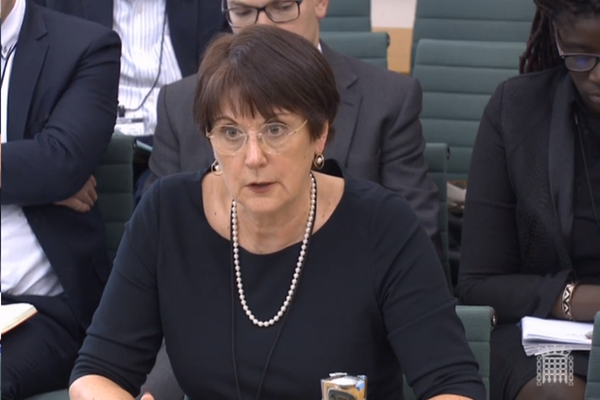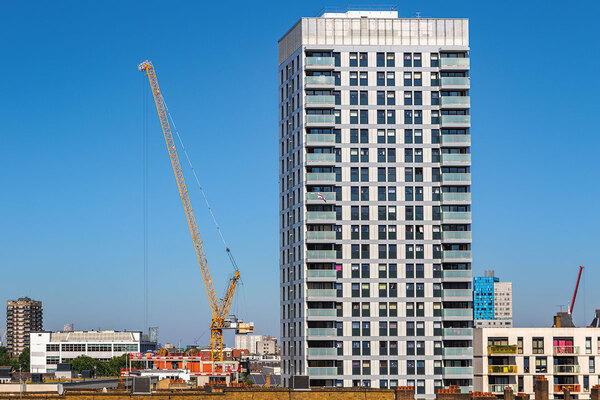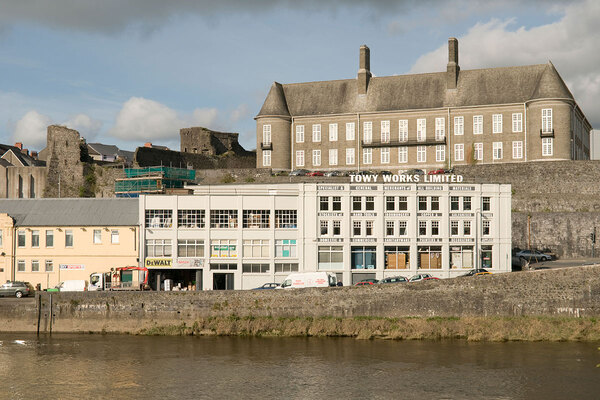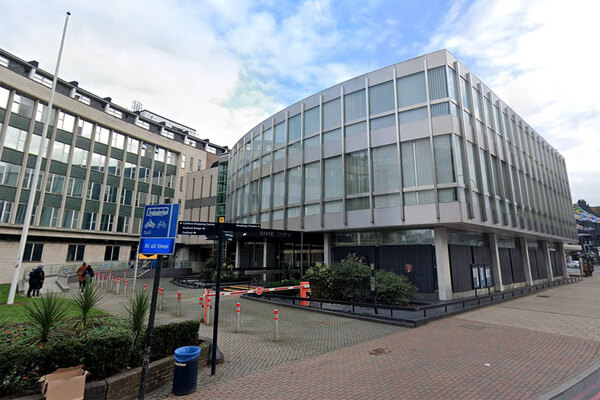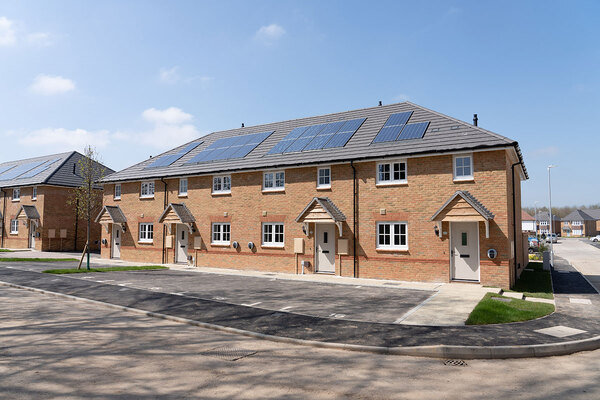You are viewing 1 of your 1 free articles
Meet the man charged with overhauling the way you approach safety
Peter Baker was appointed chief inspector of buildings earlier this year and his main responsibility is to set up the Building Safety Regulator. Martin Hilditch meets the man charged with changing how landlords and developers work forever
If you work in the housing sector, you should be hanging on Peter Baker’s every word.
He might not yet be a household name, but Mr Baker, who was appointed earlier this year as the first ever chief inspector of buildings for the Health and Safety Executive (HSE), will play a pivotal role in the future. His main job is to set up the new Building Safety Regulator. In the words of building safety minister Lord Greenhalgh, this means creating “a tougher regulatory regime” to drive “the biggest changes to building safety in a generation”.
In practice, Mr Baker must create a regulator charged with implementing a more stringent regulatory regime for high-rise buildings in England, becoming the building control authority in England for building work on high-rise buildings. It will also oversee the safety and performance of all buildings, have oversight of the performance of other building control bodies, such as councils, and promote competence among industry professionals to raise standards.
Just over six months into his new job, what light can Mr Baker shed on his planning for the new regime? And what opinion has he already formed of the housing sector based on his experience with it so far? Listen up – the message that follows is vital to the future of you all.
Let’s start with the basics. For Mr Baker, this means boiling things down to his three key priorities: setting up the new regulator, engaging with individuals and organisations who have to keep buildings safe (or those who police them) to prepare them for the new regime and speaking to residents.
He doesn’t mince his words when he talks about why this last point is crucial.
“We’ve got to build back the trust of residents, whether they are private or social, because the trust in the system which is supposed to protect them is at an all-time low,” he states. “There is a lot to do to build that trust as an independent regulator.”
“If you don’t engage with your residents, or do your best to, then you won’t get a full idea about the risks, the issues associated with a building”
That faith has to be in both the regulator and the organisations responsible for housing them.
“Residents have also got to start to feel that their landlords, building owners, the duty holder, the accountable person under the Building Safety Bill, are doing the right things,” Mr Baker adds. “Because the regulator can’t run the buildings, it can’t be there all the time – it can only intervene at certain points in the life cycle of the building. The people who are responsible for managing the risk are the building owners.”
To fulfil its own responsibilities, the regulator is recruiting residents to sit on an interim residents’ panel, that will help the HSE, which hosts the regulator, to prepare for the new regime, and to draw up plans for a more permanent panel.
Landlords should be doing more to make sure residents are in the driving seat when it comes to safety too, he adds.
“It’s a bit like the workplace with workers,” he states. “Workers often know what the problems actually are. And they usually know what the solutions are. We know that from our work with industry, trades unions and workers, and we encourage factory operators and workplace leadership to engage properly with their workforce. The same is true here. If you don’t engage with your residents, or do your best to, then you won’t get a full idea about the risks, the issues associated with a building. And your residents can also be a help to building owners in helping them manage the risk.”
So what about the housing and construction sectors themselves? Mr Baker sees it as a “seminal moment” for the sector, similar to improvements in safety on construction sites and in other workplaces back in the early 2000s.
“The construction industry does need to step up and be very clear that the current position everyone is in is just unacceptable,” he states. “The standard of modern, as well as older, housing needs to be dealt with.”
Curriculum Vitae
Peter Baker has more than 30 years’ experience with the HSE as an inspector, in a number of senior operational roles, dealing with a wide range of industry sectors, including construction, major hazard industries and local authorities. Mr Baker led the HSE’s involvement in the Building Safety Programme following the Grenfell Tower tragedy.
Mr Baker isn’t new to this field. He was appointed chief inspector of construction in 2015, and led the HSE’s Building Safety Programme response from 2018 onwards. So what is his assessment of the current state of the construction industry, and thus the main challenges the new regulator is likely to face?
“The thing that struck me about the construction industry [after becoming chief inspector of construction], before I became involved with the Grenfell issues, is how incredibly diverse and, to some extent, fragmented it can be,” he states. “There are long supply chains and some real challenges, I think, that the industry recognises in terms of skills right across the industry, which it is now tackling through its competency work. We’ll have a role in that in the future.”
Addressing this fragmentation will be one of the key challenges, he states. That means having clear lines of responsibility and regulatory oversight, all the way along the chain. Basically, there must be no hiding place for bad practice – and this must be policed rigorously. This means designers, architects, contractors and builders will all have specific responsibilities, but “also the client” who has ordered the work, he states.
“They [the client] are the ones who will eventually pay up for all of the work, and set the tone for the build,” he states. “They’re really quite crucial in setting the lead in the way in which their supply chain operates. The Building Safety Bill, and the secondary legislation, is going to reflect these principles and put very clear duties on everybody in the supply chain.”
“There is rarely one single problem that causes a major incident. It is usually a chain of failures, sometimes over a long period of time”
One thing Mr Baker is very clear on is that the housing sector requires “a different mindset” when it comes to assessing risk. As a former head of the chemicals, explosives and micobiological hazards divisions, and chemical industries division, at the HSE, he is used to working in industries that are very focused on the dangers posed by incidents that are rare but have the potential to be catastrophic. The housing sector hasn’t been used to doing this – and still has a significant distance left to travel, he thinks.
“The key thing about the new regulatory regime isn’t so much how likely [events] are, it is all about when they do happen, they can have massive consequences. What I’ve learned from my experience is that requires a different mindset to, let’s say conventional, day-to-day risk and safety management. It requires you to think about the worst thing that could happen. It may feel incredible, but actually you have got to go through that mindset of thinking, ‘Well, what could happen?’. You’ve also got to have a really good understanding about how things can contribute on aggregate to a problem. There is rarely one single problem that causes a major incident. It is usually a chain of failures, sometimes over a long period of time.”
If this is some of the big picture stuff, what about the specific detail? What kind of timescale is Mr Baker working to, and what timetable should industry be adopting? An indicative timetable has, of course, already been published by government, and Mr Baker says he anticipates Royal Assent for the Building Safety Bill in “9-12 months’ time”.
“We’re working on the basis at the moment that the first steps in the new regulatory framework will come online in 2023,” he states.
In numbers
100
Approximate number of people working for HSE on building safety regulatory functions
9-12
Months Mr Baker expects it will take for Building Safety Bill to receive Royal Assent
What about the resources currently available within the HSE – and how much will be needed going forward? As of today, there are about 100 people in the HSE working on building safety regulatory functions – that includes everything from regulators themselves to policy people and communications teams.
The question of the number of employees the Building Safety Regulator will have when it is up and running is still a very live one, however.
“I can’t say for certain exactly how many people we will need [at the regulator],” Mr Baker states. “We will clearly need people with the right sets of skills to do the regulatory role. I’d also stress that in the area of high-rise residential buildings, both in their construction and also their occupation, we’re going to be delivering a lot of the regulatory function through local authorities and fire and rescue services and others. So, while the Building Safety Regulator will have a minimum capacity to deal with its regulatory work, a lot of the boots on the ground are going to be from the local authorities and the fire and rescue services as well.”
Preparing for change
Obviously, while it may be some time before the regulator is fully up and running, social landlords should be preparing for the changes now. One of the ways the HSE is attempting to pave the way is through the recent publication of a document outlining early key messages when it comes to safety case principles for high-rise blocks. As a reminder, a key element of the new Building Safety Bill is that some buildings will require a safety case when they are occupied and landlords will have to produce a safety case report.
In its blurb talking about these safety cases, the government likens them to an exam question which asks people whether they can identify the safety risks for their building and how you manage them on an ongoing basis.
So, if the safety case is an exam question, based on the social landlords that Mr Baker and his team have worked with so far, is the sector currently operating at an A* standard, or is it flunking?
“I think it is true to say that the early adopters we have been working with needed quite a lot of help to get their collective heads round the concept of safety cases,” he states. “It is a very new concept, particularly for landlords, but less so for the construction industry, because they really should understand both conventional safety, as well as high-hazard risk.”
Right now “a lot of landlords will be starting from a very low base”, he states. This doesn’t necessarily mean they are doing the wrong things, however.
“What we’ve also found, and I found this with the major hazard industries in my past experience, is in the majority of cases, people are probably doing the right things anyway. It is just that they don’t recognise that it is part and parcel of a more complex management system. One of the messages I want to get across to landlords is, first of all, don’t panic. If you are managing your buildings well now, you’re probably on the way to meeting what will be required under the new regime.”
Our time comes to a close – but we’ll be hearing a lot more from Peter Baker and his team in the future. And if the regime really is to be as transformative as it intends, Mr Baker is the man who holds the future in his hands.
Sign up for our daily newsletter
Already have an account? Click here to manage your newsletters

